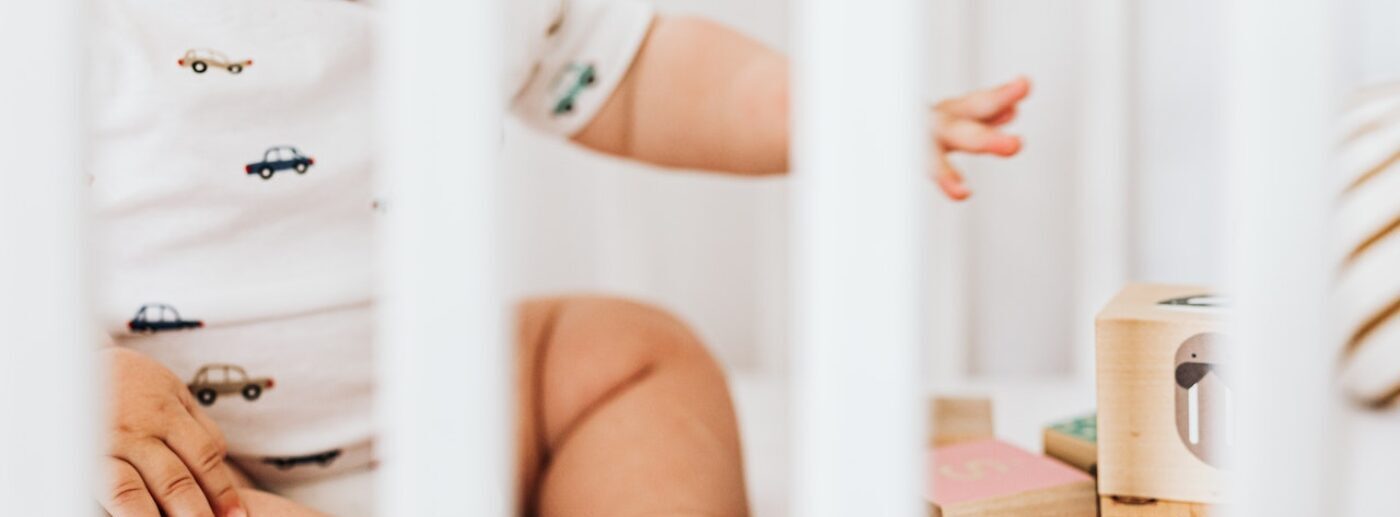When it comes to creating a cozy and safe sleep environment for your baby, choosing the right bedding for their crib is crucial. The bedding you select should prioritize safety, comfort, and style. With a wide array of options available, it’s essential to make informed choices that adhere to recommended safety guidelines. In this article, we will explore the key considerations when choosing bedding for your baby’s crib. From crib mattresses and fitted sheets to blankets and sleep sacks, we will guide you through the process of selecting bedding that promotes a comfortable and safe sleep experience for your little one.
Crib Mattress
The foundation of your baby’s crib bedding is the mattress. Opt for a firm and well-fitting crib mattress that meets safety standards. Look for mattresses that are specifically designed for infants and feature a waterproof cover for easy cleaning. Ensure that the mattress fits snugly in the crib, leaving no gaps where your baby could get trapped. Avoid using second-hand or older mattresses, as they may not meet current safety standards or may have deteriorated over time. Additionally, choose a mattress that is free from harmful chemicals and allergens to protect your baby’s health.
Fitted Sheets
Fitted sheets are an essential component of your baby’s crib bedding. Choose sheets made from soft, breathable, and hypoallergenic materials, such as cotton or bamboo. Opt for fitted sheets that have elastic all around the edges to ensure a secure fit and prevent them from coming loose. Avoid using sheets with excessive ruffles, ribbons, or ties, as these can pose a safety hazard. It’s advisable to have at least two to three sets of fitted sheets on hand for easy rotation and to accommodate any accidents or spills that may occur during the night.
Blankets and Swaddles
Blankets and swaddles provide warmth and comfort for your baby while they sleep. However, it’s important to exercise caution when using blankets in the crib to reduce the risk of suffocation or entanglement. For newborns, consider using swaddles or sleep sacks specifically designed for safe sleep. These secure wraps help recreate the cozy feeling of being in the womb while keeping your baby’s arms and legs safely contained. As your baby grows and becomes more mobile, transition to sleep sacks or wearable blankets that allow for freedom of movement while still providing warmth.
Avoiding Loose Bedding
To ensure your baby’s safety, it is crucial to avoid using loose bedding in the crib. Remove decorative pillows, stuffed animals, and any other plush items that can pose a suffocation risk. Loose bedding, such as crib bumpers, should also be avoided, as they can increase the risk of entrapment or suffocation. Instead, focus on creating a minimalistic and clutter-free sleep environment. If you want to add a decorative touch, opt for wall decals or artwork that can be securely attached to the walls, away from the crib.
Breathable Crib Liners
If you prefer to have a visual barrier around the crib, consider using breathable crib liners. These liners attach to the inside of the crib and provide a mesh or breathable fabric barrier between the slats. Breathable crib liners can help prevent your baby’s limbs from getting stuck between the slats while maintaining a safe sleep environment. Look for liners that are specifically designed to promote airflow and reduce the risk of suffocation. Regularly check the liners to ensure they are securely attached and in good condition.
Sleep Positioners
Sleep positioners are not recommended as part of your baby’s crib bedding. The American Academy of Pediatrics advises against using sleep positioners, as they pose a suffocation risk. These products claim to keep your baby in a specific position while they sleep, but they can potentially cause the baby’s airway to become blocked. It’s best to allow your baby to sleep on their back on a firm mattress without any additional positioners or aids. This helps reduce the risk of Sudden Infant Death Syndrome (SIDS).
Temperature Regulation
Consider the temperature in your baby’s nursery when selecting bedding. It’s important to maintain a comfortable and safe temperature range for your little one. Choose bedding that is appropriate for the current season and room temperature. In warmer months, lightweight and breathable fabrics like cotton are ideal to prevent overheating. For colder months, layering with a sleep sack or adding a light blanket can provide extra warmth. Use a room thermometer to monitor the temperature and ensure it stays within the recommended range of 68-72 degrees Fahrenheit (20-22 degrees Celsius) for optimal sleep comfort.
Allergies and Sensitivities
Babies can be sensitive to certain materials and fabrics, so consider any known allergies or sensitivities when selecting bedding. Opt for hypoallergenic materials that are less likely to cause skin irritations or allergic reactions. Natural fibers like organic cotton or bamboo are often gentle on baby’s delicate skin and free from harsh chemicals. Avoid bedding that has been treated with chemical flame retardants or synthetic dyes. Additionally, washing bedding with fragrance-free and hypoallergenic detergent can help reduce the risk of irritations.
Easy Maintenance and Durability
Babies are prone to messes, so choose bedding that is easy to clean and maintain. Look for bedding that is machine washable and can withstand frequent laundering. It’s helpful to have multiple sets of bedding on hand to accommodate accidents or spills. Consider the durability of the bedding materials to ensure they can withstand regular use and washing without losing their quality or shape. Investing in high-quality bedding will not only provide comfort for your baby but also ensure that it lasts throughout their early years.
Personal Style and Aesthetics
While safety and comfort are paramount, you can still incorporate your personal style and create an aesthetically pleasing nursery. Choose bedding in colors and patterns that complement the overall nursery decor. Whether you prefer soft pastels, bold prints, or gender-neutral designs, there are numerous options available to suit your taste. Just ensure that any decorative elements, such as appliques or embellishments, are securely attached to avoid posing a choking hazard. By combining safety, comfort, and style, you can create a visually appealing and inviting sleep space for your baby.
When choosing bedding for your baby’s crib, prioritize safety, comfort, and style. Select a firm and well-fitting crib mattress and use fitted sheets made from soft and hypoallergenic materials. Avoid loose bedding and opt for swaddles, sleep sacks, or wearable blankets to keep your baby cozy without compromising safety. Consider the temperature in the nursery and choose bedding appropriate for the season. Be mindful of any allergies or sensitivities your baby may have and opt for hypoallergenic materials. Choose bedding that is easy to clean and maintain, and align the aesthetic with your personal style to create a beautiful and inviting nursery space for your little one.

